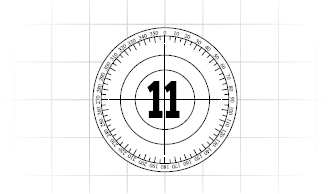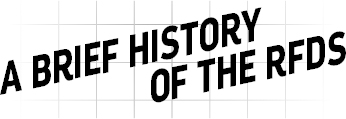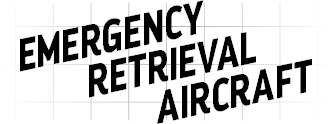Remote Rescue (9 page)
Authors: George Ivanoff


âSo this is where it happened.' Mum was looking in through the window of the Transcontinental Hotel in Farina.
âYep,' Dad answered.
He hung back, not going all the way up to the building. A satellite phone dangled from the belt of his blue jeans. Sam and Em were across the road, staring into the
bakery, no doubt imagining again that it was a jail.
âYou can see better from inside,' said Dawson, leading Mum into the dilapidated building.
Dawson took her through the whole story, showing where the accident had happened and how Dad had been rescued. After Mum walked back out, Dawson jumped down into the cellar.
It felt strange being back. But Dad had insisted on doing the holiday over again. This time they had Mum with them and they were better prepared. He said that bad memories were like lingering ghosts and that they had to be put to rest and replaced with good memories.
Dawson nodded to himself. The image of
Dad lying in the cellar had haunted him for the past year. A feeling of fear would creep up on him when he least expected it. But now that he was here ⦠the cellar didn't seem so scary. No ghosts to be found ⦠not anymore. He smiled at the thought of a ghost town without any ghosts.
Taking a last look around, he noticed the steps had been cleared of rubble. He climbed up and out.
The sun was inching to the horizon and the golden light reminded Dawson of their last visit. Maybe this time he'd get to look around properly. And maybe this time, no one would get injured.
âYou know, you're very lucky,' Mum said to Dad as they all headed for the campground.
âYep,' answered Dad. He still walked with a bit of limp. âLucky to have such resourceful kids. And lucky to live in a country that has the Royal Flying Doctor Service.'
âYeah,' agreed Sam. âResourceful kids. That'll be us.'
âWhat does “resourceful” mean?' asked Em.
âIt means being quick and clever at solving problems,' answered Dad, ruffling her hair.
âI'm quick!' Em smiled proudly. âThat's why I'm good at chasey.' She looked up at Dad suddenly, eyes wide like a puppy dog. âCan we play now?'
âAs long as you stay out of the buildings,' said Dad.
Em grinned, slapped Sam on the leg and took off up the main street.
Sam turned to Dawson, an enquiring look in her eyes. Dawson shrugged. Sam laughed, slapped him on the shoulder and went after Em.
âHigh five,' said Dad raising his hand.
Dawson clapped his hand.
âI may be a little limpy,' said Dad, âbut I'm still a furiously fast father. So you better get going.'
Dawson grabbed his Mum's hand and took off.
âReady or not,' called Dad, âhere I come!'

The Royal Flying Doctor Service of Australia (RFDS) began as the dream of the Reverend John Flynn, a minister with the Presbyterian Church. He witnessed the struggle of pioneers living in remote areas with no available medical care. Flynn's vision was to provide a âmantle of safety' for these people, and on 15 May 1928 his dream became a reality with the opening of the Australian Inland Mission Aerial Medical Service (later renamed the Royal Flying Doctor Service) in Cloncurry, Queensland.
Over the next few years, the Service began to expand across the country, and by the 1950s was acknowledged by former Prime Minister Sir Robert Menzies as âperhaps the single greatest contribution to the effective settlement of the far distant country that we have witnessed in our time'.
Until the 1960s, the RFDS rarely owned its own aircraft. Progressively, the RFDS began to purchase its own aircraft and employ dedicated pilots and engineers.
Today, the Royal Flying Doctor Service is one of the largest and most comprehensive aeromedical organisations in the world. Using the latest in aviation, medical and communications technology, it delivers extensive health care and 24-hour
emergency service to those who live, work and travel throughout Australia. The RFDS has a fleet of 63 aircraft operating from 22 bases located across the nation and provides medical assistance to over 290,000 people every year.
Â
Did you know? In 2015 the RFDS fleet flew the equivalent of 34 trips to the moon and back!


In order to modify an aircraft for its demanding role in the RFDS, it needs to be transformed into a flying intensive care unit. This is a two-stage process that can cost more than two million dollars!
The first stage involves readying the aircraft for emergency retrievals in difficult conditions. The landing gear is modified to allow for take-offs and landings on dirt airstrips. Half the aircraft is removed, reinforcements inserted and a cargo door wide enough to allow for easy loading and
unloading of stretcher patients is created. A custom-built stretcher system with a hydraulic lifting device to raise and lower patients to and from the aircraft is then added.
The second stage involves furnishing the inside of the aircraft with a full range of medical equipment, including a defibrillator, ventilator, oxygen and suction system, medical cabinets, monitors and stretchers. A separate medical battery is installed to supply power to all on-board medical equipment. An integrated communication panel is added to allow medical staff to make emergency satellite phone calls while in flight.

The locations used in this book are real places. This includes the ghost town of Farina, situated along the Outback Highway in South Australia. But Farina wasn't always a ghost town â¦
Farina was originally settled in 1878 as âGovernment Gums' because of the River Red Gums growing in the area. It wasn't long before the settling farmers changed the town's name to Farina, which is Latin for wheat or flour. From 1882 Farina was used as a railhead â a station where other
transport routes begin. Supplies would come by train and then go by road to other towns, including Port Augusta. Silver and copper mines were also dug in the surrounding area.
Farina was at its peak in the late 1800s, with a population of about 600, when good rainfalls meant that the farms flourished. The town included a railway station, two hotels, a general store, an underground bakery, a bank, a post office, a church, five blacksmiths and a school, as well as other buildings.
But the weather dried up, and the mines closed in 1927. By the 1940s people were leaving the town in droves. The school closed in 1957, the post office in 1960 and the general store in 1967. Finally, the railway line was shut down in the 1980s and the town was abandoned. It quickly fell into
ruin and became the crumbling ghost town it now is.
To find out more about Farina and how it is slowly being restored, check out the Farina Restoration Project:
http://www.farinarestoration.com

© Kerri Valkova

The Australian outback offers spectacular scenery and the chance for great adventure. But it is important to be ready for the risks of travelling in isolated areas. Unfortunately, up to a quarter of the emergency medical evacuations that the RFDS carries out each year are the result of city travellers who get into trouble on their outback adventure.
Preparation
- Get good quality maps and plan your route
- Bring matches or a lighter
- Bring a compass and a whistle
- Carry enough food for each person for two days
- Do a first-aid course and pack a first-aid kit
- Take a hat, sunscreen and insect repellent
- Carry a high frequency (HF) radio compatible with the RFDS (mobile phones and CB radios will not work in remote areas); you can buy an HF radio from most two-way communication centres
- Store water in small containers instead of one large tank; if you're unused to the outback, you may need one litre of water every hour
- Wear clothing suitable for the climate: wear good walking shoes; take warmer clothes for the evenings
- Don't travel during the hottest part of the year
